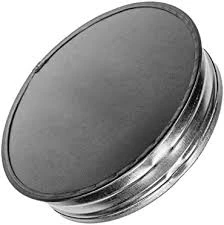Mobile:+86-311-808-126-83
Email:info@ydcastings.com
aluminium casting die
Aluminium casting die, a vital component in manufacturing processes, plays an integral role in shaping and forming metal products with precision and efficiency. This technique has gained prominence due to its numerous advantages over traditional manufacturing methods, such as improved surface finish, a high degree of dimensional accuracy, and reduced waste.
Aluminium die casting involves the use of molten aluminium, which is injected into a metal die under high pressure. This process allows for the production of complex geometries that are often unattainable through other manufacturing techniques. Moreover, the strength-to-weight ratio of aluminium makes it an ideal material for various applications, including automotive, aerospace, and consumer electronics.
One of the primary benefits of using aluminium for die casting is its excellent thermal conductivity. This property facilitates quicker cooling times, which not only decreases production cycles but also enhances the mechanical properties of the finished product. Additionally, the lightweight nature of aluminium contributes to fuel efficiency and performance, making it especially appealing for industries focused on sustainability.
However, the efficiency of aluminium die casting depends significantly on the design of the die itself. Well-designed dies can improve the overall casting process by ensuring that molten aluminium flows smoothly into all cavities of the die. Factors such as venting, cooling channels, and the release features are crucial in achieving optimal results. Engineers and designers must collaborate closely to consider these aspects, which ultimately lead to higher quality castings and reduced production times.
aluminium casting die

The durability of aluminium casting dies is another notable aspect. They are typically made from high-strength materials that can withstand the stresses of repetitive use. This longevity not only reduces the need for frequent replacements but also results in cost savings for manufacturers over time. However, regular maintenance and inspection are essential to ensure that the dies remain in good condition and continue to produce quality parts.
As industries evolve and demand for higher quality products increases, the role of aluminium casting dies will continue to grow
. Innovations in die design, materials, and technology, such as 3D printing for die components, will further enhance the capabilities of this manufacturing method. By embracing these advancements, manufacturers can improve efficiency, reduce costs, and meet the rising expectations of consumers in a competitive global market.In conclusion, aluminium casting die is an indispensable process in the modern manufacturing landscape, enabling the production of high-quality parts across various industries. Its advantages in terms of speed, accuracy, and material properties highlight its importance and future potential.
-
Why Should You Invest in Superior Pump Castings for Your Equipment?NewsJun.09,2025
-
Unlock Performance Potential with Stainless Impellers and Aluminum End CapsNewsJun.09,2025
-
Revolutionize Your Machinery with Superior Cast Iron and Aluminum ComponentsNewsJun.09,2025
-
Revolutionize Fluid Dynamics with Premium Pump ComponentsNewsJun.09,2025
-
Optimizing Industrial Systems with Essential Valve ComponentsNewsJun.09,2025
-
Elevate Grid Efficiency with High-Precision Power CastingsNewsJun.09,2025











